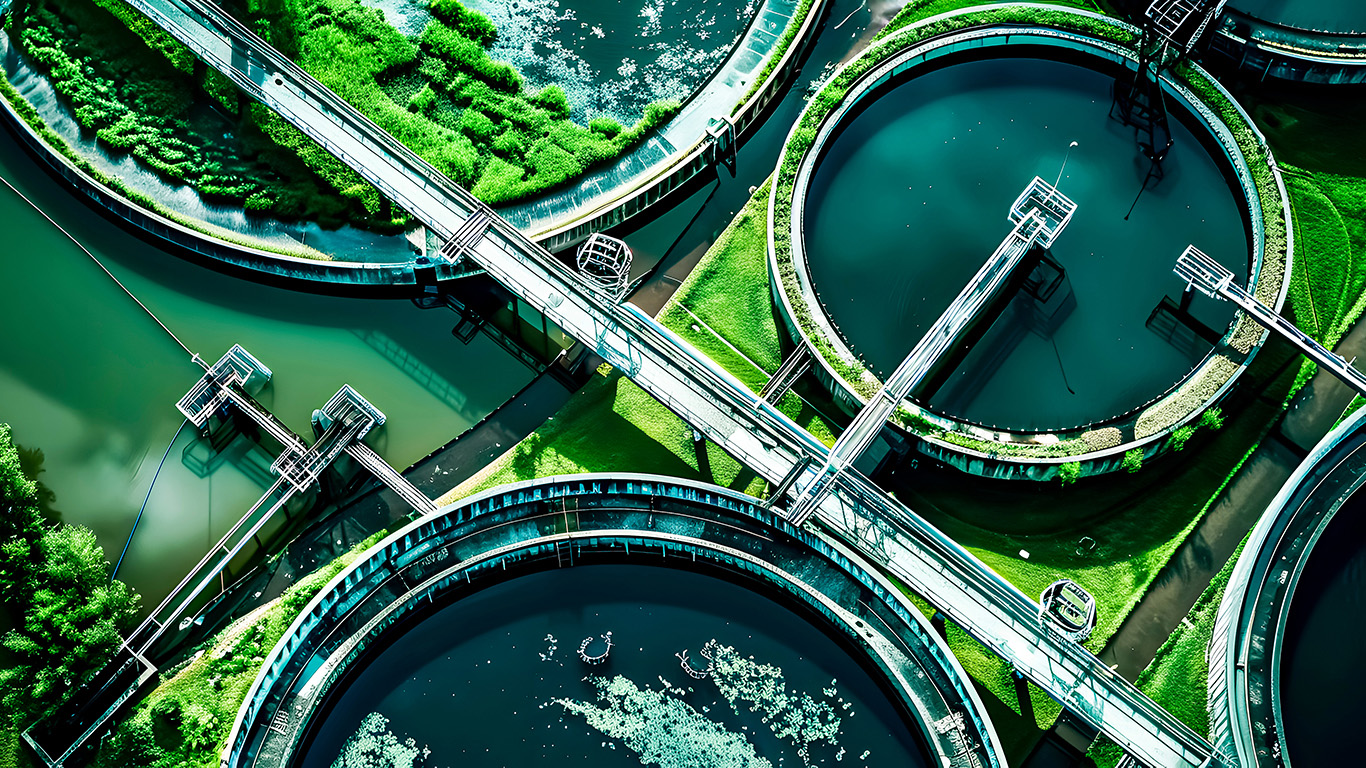Water
Water and Wastewater Industry Overview
The water medium category addresses the water and wastewater treatment subsector with key segments being municipal drinking water delivery and treatment, municipal wastewater conveyance and treatment, ground and surface water remediation, industrial process water treatment, and industrial wastewater treatment. U.S. industry revenue in the water and wastewater treatment subsector in 2022 was approximately $200 billion. This figure includes analytical services, wastewater treatment services, consulting and engineering, equipment and chemicals, instruments and information systems, and utilities.
Municipal drinking water treatment and delivery, municipal wastewater conveyance and treatment, and ground and surface water remediation are distinct from industrial water treatment. The former deals mostly with public-sector clients concerned with provision of water for human consumption and use and the protection of water as an ecological and social resource. The public utility aspect of these markets generally translates into a low degree of market flexibility and innovation due to a relatively higher regulatory burden that is applied to protect human health.
Alternatively, industrial process and wastewater (sometimes called “produced water”) speak to water’s value as an economic input for a variety of industries. Industrial water treatment solutions typically are more diverse and sophisticated than municipal treatment systems and are usually higher on the value chain for generating revenue for suppliers. The cost and complexity of treatment technologies are dependent on the quality of water needed for specific industrial processes, the contaminants introduced, and the regulatory requirements placed on industrial effluents, i.e., water released back into the environment.
Key Market Trends and Themes for the Global Water Industry
Zero Liquid Discharge, Reuse and Resource Recovery
Water scarcity, increasing costs of fresh water for industrial uses, and growing costs to meet stringent effluent discharge regulations are driving a trend toward Zero Liquid Discharge (ZLD). ZLD applies a process-tailored suite of advanced treatment technologies – such as evaporators, brine concentrators, and crystallizers – to treat industrial effluent to a high degree of purity for reuse. Companies employing ZLD systems produce no effluent, and thereby avoid effluent permitting and regulatory costs altogether. ZLD is a rapidly expanding technology suite utilized in industrial settings, especially in the power generation, oil and gas, and chemicals industries. ZLD also provides companies with extracted organic or mineral solids, which can be reused on-site to produce energy or as a potential manufacturing input that can be sold on the open market.
In the municipal sector, there is a trend toward resource recovery, where wastewater treatment plants recover and use or sell energy, organic solids, minerals, and nutrients. These facilities are now referring to themselves as water resource recovery facilities (WRRF) rather than wastewater treatment plants. Growing technology areas for WRRFs include nutrient recovery and anaerobic digestion with combined heat and power.
Smart Water Technologies
The deployment of smart water technologies is being driven by the growing trend toward improved water pricing, efficiency, and conservation and loss. Smart water technologies include systems that automate monitoring and metering, treatment, distribution, loss, and leakage. These ‘smart’ components include a suite of automation and monitoring technologies that are linked into a network that includes human interfaces and controls.
In utility and industrial settings, smart water is governed by supervisory control and data acquisition (SCADA) systems. Consumer-sector interfaces can take the form of any combination of smart meter and consumption management technologies, including web-enabled versions for personal mobile devices.
Disaster Resilience
Natural disasters are forcing utilities to fundamentally rethink how they move, treat, and store water and wastewater products. Three major challenges to water service providers include (1) disruption of service resulting from infrastructure failures caused by severe weather events such as hurricanes; (2) combined sewer overflow due to severe precipitation events; and (3) water shortages due to drought.
Concerns around natural disasters are leading to a paradigm shift in the configuration of water infrastructure and in how water is managed. New investments are being made in modular and mobile systems for emergency response; evaporation prevention technologies; water storage systems; groundwater recharge systems; storm water management; smart metering for billing and automated shutoff systems; and a slew of adaptive technologies for treatment processes with increased durability and the ability to treat variable rates of flow and volumes.
Public Private Partnerships (PPPs)
PPPs in water infrastructure are typically defined as an arrangement between the government and a private entity (often an Engineering, Procurement, and Construction (EPC) firm or private operator). In these arrangements, a private entity invests in partial or whole ownership of a capital development project or utility service in exchange for a share of tariff revenue. There is no standard model for how PPPs are structured to handle the division of capital, service responsibilities, project and asset risk, and revenue sharing. PPPs can therefore range from basic operations concessions to “Build-Own-Operate” models where the private entity is the wholesale owner of the water infrastructure and utility service. PPP projects are growing rapidly throughout the world. Governments turn to PPPs to address funding gaps for infrastructure projects, to provide more efficient service to consumers, and to defray project and asset risks. Businesses find PPPs to be lucrative long-term investments where tariff rates are optimized, and tariff avoidance is low. The scope of opportunity for PPPs rests in the quality and consistency of the rate payer; the government’s ability to create incentives for PPP projects through balancing risk and financial incentives; and the private sector’s willingness to navigate a complex contractual system of asset and revenue ownership and operation and transfer to maximize profitability.
